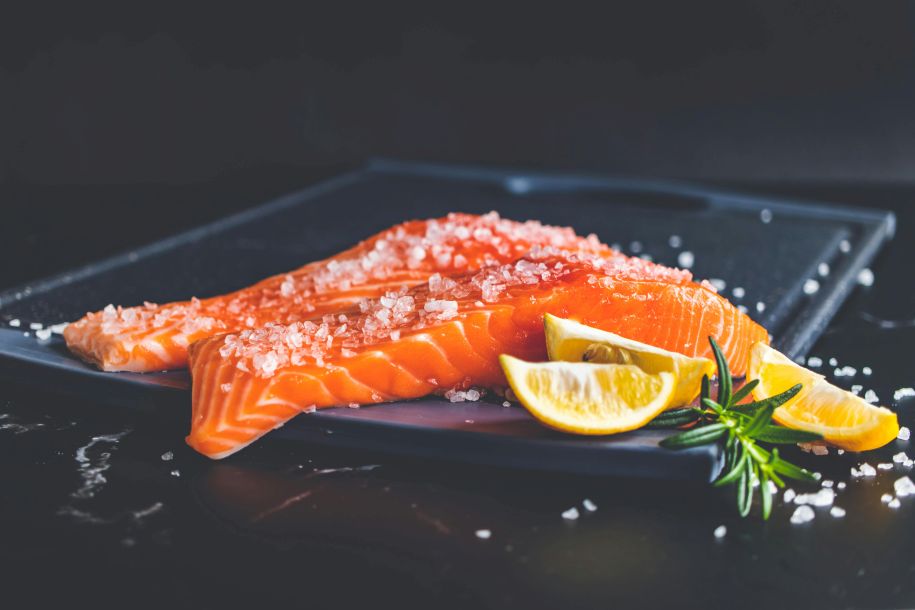
Photo by Anastasia Yudin
There are different opinions as to how much protein one should get. Some say 1 gram of protein per pound of body weight and others say 7 grams of protein per 20 pounds of body weight (WebMD). I’ve been trying to achieve 80-100 grams, but I’ve been falling short occasionally. Sometimes I’m just not paying attention to the details even though I plan meals every week. You have to be mindful of protein grams as you’re writing down what you’re going to eat.
Proteins are made up of chemical building blocks called amino acids. Protein exists in the trillions of cells in the human body. It supports building muscle and becomes very important as we age. Protein is a major part of the skin, hair, nails, muscle, bones, and internal organs.
According to “Psychology Today,” eating protein is beneficial for your brain and improves cognitive function. There’s a connection between exercise and mental health. Protein helps with many processes in the body including an increase in healing and reduction of inflammation. It also reduces hunger by making you feel fuller. It’s believed that the weight-reducing hormones are optimal when protein is consumed. Here are some of the benefits of protein:
*Muscle repair and growth
*Enhanced metabolic rate
*Sustain energy levels
*Improved strength and performance
*Good for your bones
*Lowers blood pressure
*Helps people stay fit as they age (article on sarcopenia)
Start your day with protein. Eat eggs for breakfast instead of toast or cereal. Swap regular yogurt for Greek yogurt, which is twice the protein (unfortunately I don’t like Greek yogurt.) Add clean protein powder to smoothies, oatmeal, or homemade baked goods.
Tips to add more protein:
-Prioritize protein in every meal
-Focus on lean meat or fish
-Add beans, chickpeas, lentils, or quinoa for bonus protein
-Increase portion sizes of protein sources
-Choose high protein snacks
Below is a list of food items and their approximate grams of protein. Further down are examples of meals that can get you to 100 grams. The focus of this meal plan is to target protein only. The plans don’t include snacks, which would add more to the overall total.
3 eggs, 18g
8 oz cottage cheese, 26g
8 oz bone broth, 20g
4 oz Chicken breast, 35g
4 Tbsp Vital Proteins collagen peptide shake, 18g
6 oz Filet mignon, 44g
4 oz Salmon, 40g
Can of tuna, 20g
Bison burger patty, 30g
5 oz Greek yogurt, 18g
3-Day Meal Planning
Day 1
3 eggs, fruit (18g)
Grilled chicken salad (35g)
Filet mignon, potato, asparagus (44g)
Total: 97g
Day 2
Greek yogurt, avocado toast (18g)
Chicken & rice soup with bone broth (37g)
Salmon, fruit, green beans (40g)
Total: 95g
Day 3
3-egg veggie omelet, protein shake (36g)
Tuna salad, lettuce, tomato, pickle garnish (20g)
Italian sausage, roasted potatoes, peppers, onions, mushrooms (32g)
Total: 88g
Don’t load up on dairy but instead make balanced choices. Be very careful with protein bars, since many of them have loads of sugar! Creating a meal plan each week is beneficial and will remind you when you need to thaw meat or cut up produce ahead of time. Eat a combination of foods to improve gut microbiome and measure portion sizes to ensure the amount of protein grams. Grass-fed, pasture-raised, and wild caught are always better so add those to the grocery list if it’s in your budget.
You can enhance your physical fitness by prioritizing your protein intake. Small changes in habits like meal planning and being mindful of food choices will help an individual reach their protein goal. A quick calculation of protein grams will create awareness of what you’re consuming. There are several Apps that can help track macros and give you an idea of where you stand each day. This is a great way to know if you’re eating a balanced diet. Good luck!
Sign up for my free monthly newsletter at the bottom of my blog or reach out to Kim anytime at nourishandflex@gmail.com

